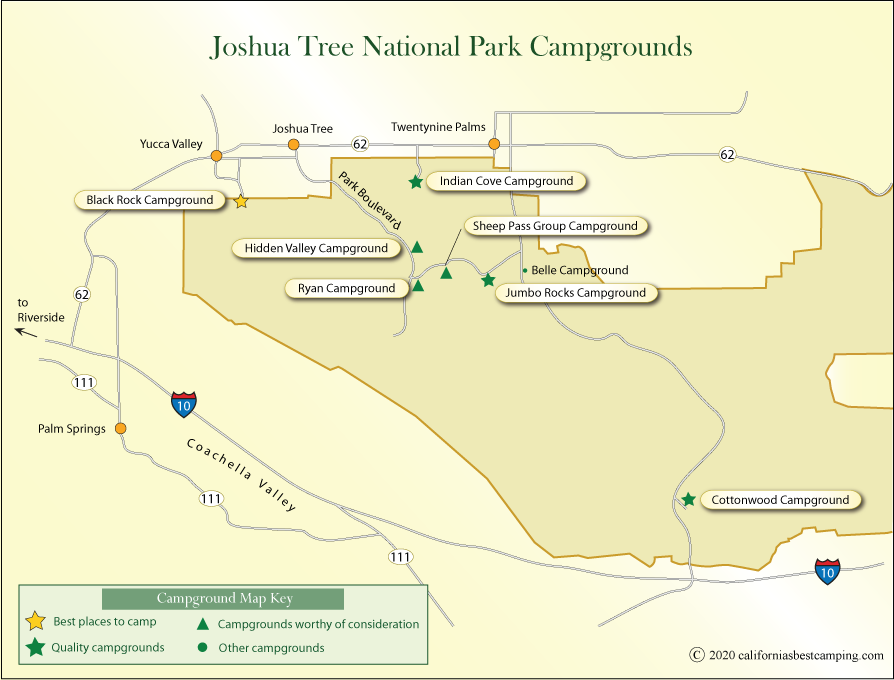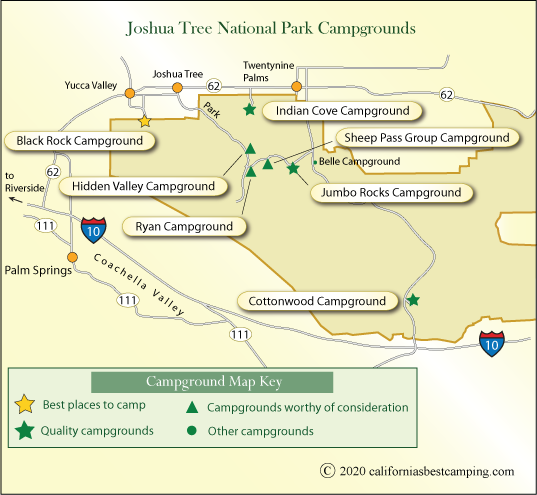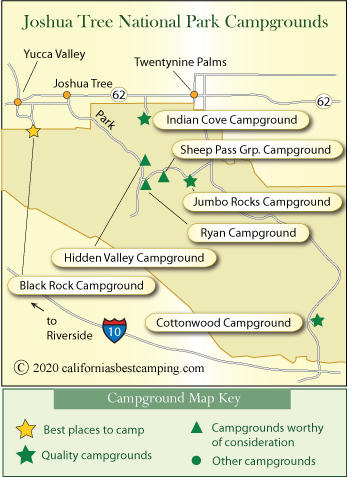Selection of the Best Campgrounds is based on a combination of campground facilities, campground ambiance, and the proximity of outstanding recreational opportunities. The ratings are intended to serve as a general guide and may not always concur with the interests and experiences of others.
Last Updated January 2025
Why is Joshua Tree National Park Camping So Popular?
Despite desert conditions with little water and occasional strong winds, Joshua Tree National Park Camping draws visitors from across the country. During peak season from October through May, weekends find many of the campgrounds full.
Visitors are drawn to Joshua Tree National Park by a variety of natural features. Clusters of massive boulders, sculpted by wind and rain, attract everyone from photographers to rock climbers. Many campsites are tucked in among these rocks.
First time campers from urban areas, unaccustomed to the desert, are amazed by the dark night sky in Joshua Tree National Park. Thousands of stars, never seen from city viewpoints, fill the desert sky in dazzling brilliance from horizon to horizon.
Joshua trees begin to bloom in late February, soon followed by shrubs and wildflowers. Colorful blooms are often enjoyed into June.
Among the most popular ranger-led activities at the park is the Keys Ranch Tour. Learn about the lives of the early ranchers as you visit the ranch house, school, store and workshop.
Joshua Tree National Park
Camping - Highlights
For those enjoying a few days or even a week of Joshua Tree National Park Camping, there are many wonderful places to visit and enjoy. Visitor Centers always may good places to begin explorations of any national park. Find Visitor Centers in the village of Joshua Tree, in Twentynine Palms, and near the south entrance to the park.
Plan to spend time at a number of the most popular destinations in the park. Black Rock Canyon has popular hiking trails, a visitor center, and wildlife viewing. Skull Rock, always a favorite stop, is located along Park Boulevard near Jumbo Rocks Campground.
Cottonwood Spring Oasis is near the southern entrance. Besides the spring, find birding, hiking, and remnants of gold mining. Keys View sits on the crest of the Little San Bernardino Mountains. Visitors there enjoy panoramic views of the Coachella Valley.
Joshua Tree National Park Camping
While several campgrounds in Joshua Tree National Park provide potable water, many do not. Desert travelers know to always carry plenty of water. Most campers visit the park during the winter and spring when temperatures are cooler.
Besides Sheep Pass Group Camp, there are two standard campgrounds that have group sites attached to them: Indian Cove and Cottonwood. Black Rock Campground and Ryan Campground have equestrian camps associated with them.



